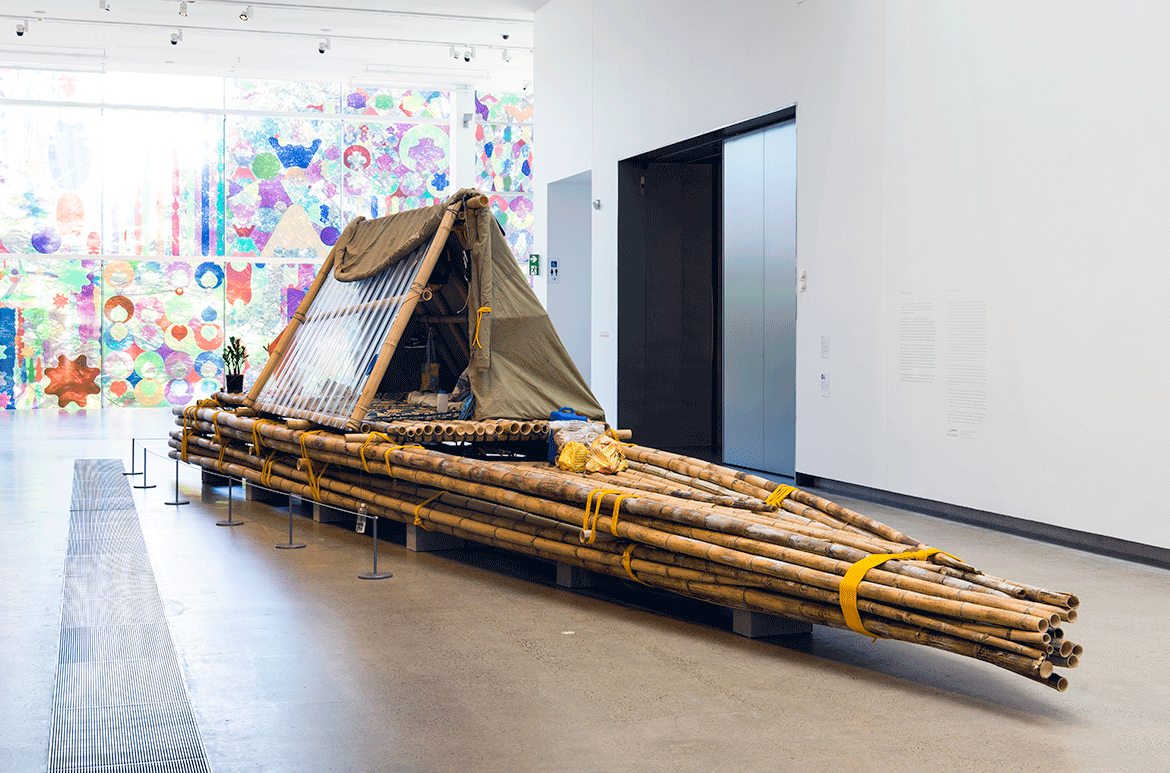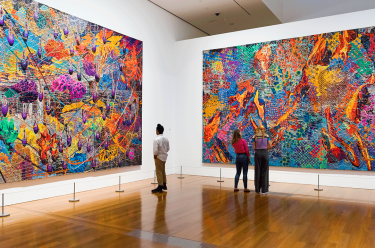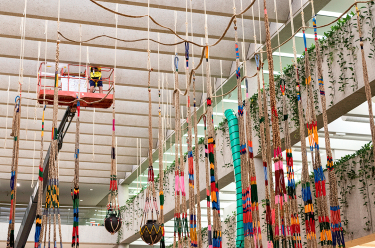Salote Tawale was born in Fiji and grew up in suburban Melbourne, and works across media to explore and comment on experiences of dislocation specific to living and working as an intersectional person in Australia. A queer woman of colour, Tawale views all of her works — whether they are representational or not — as self-portraits through which she directs and controls her image, its context, use and distribution. From video performances to sculptural objects, she presents her image as intentionally performative, slipping around and between fixed categories of being, and playfully unsettling ideas of authenticity and homogeneity. A warm sense of humour and humility pervades much of Tawale’s work as she self-reflexively creates new spaces of possibility and belonging within the myriad cultures in which she resides.
Watch | Salote discusses ‘No Location’
No Location 2021 is the latest in a series of installations in which Tawale uses materials instead of her body to perform her identity for her. Taking the form of a 13.5 metre-long raft made from pliable lengths of bamboo and lashed together with recycled bedsheets and rope, the work is inspired by HMS No Come Back — a similarly scaled river craft whose construction was documented for the Fiji Museum in Suva, which Tawale first viewed during a visit to the museum on a childhood trip ‘home’.1 The artist recounts her immediate sense of connection to this boat, which she imagined would provide the perfect vessel for a person divided between Australia and Fiji to inhabit.
Watercraft like HMS No Come Back are known in Fiji as bilibili and were traditionally created to move people and goods from the interior of Fiji down river to the sea. Constructed from bamboo and other readily available materials, bilibili were relatively easy to construct, and light and flexible enough to move through rapids and over obstacles in the river. At the end of each journey, having served its purpose, the bilibili would be deconstructed and the materials that had been difficult to source or were labour-intensive would be kept and recycled in future vessels, while the rest was returned to the natural environment.
Salote Tawale ‘No Location’ (conceptual image) 2021
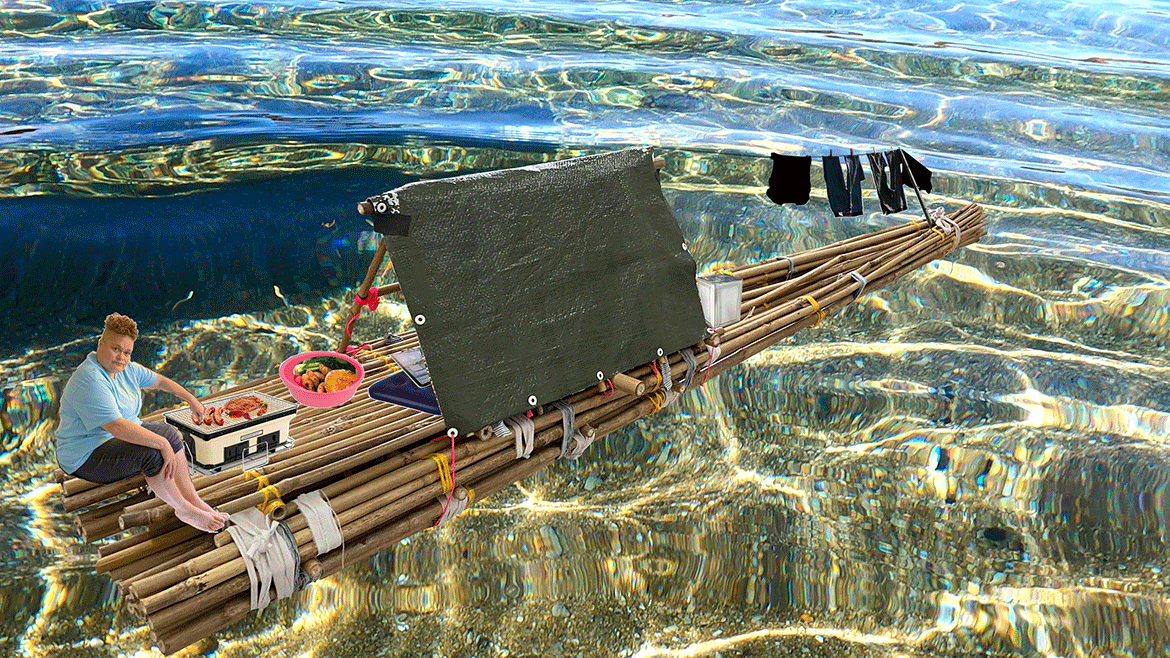
Salote Tawale ‘No Location’ installation
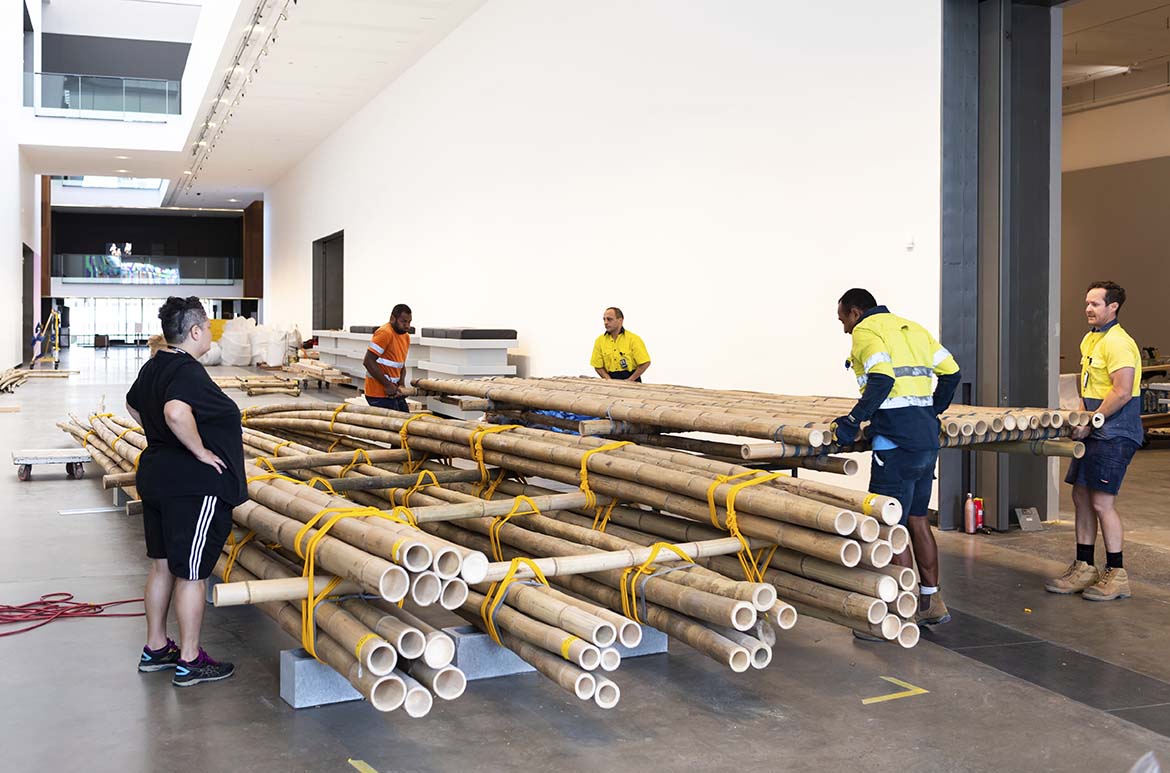
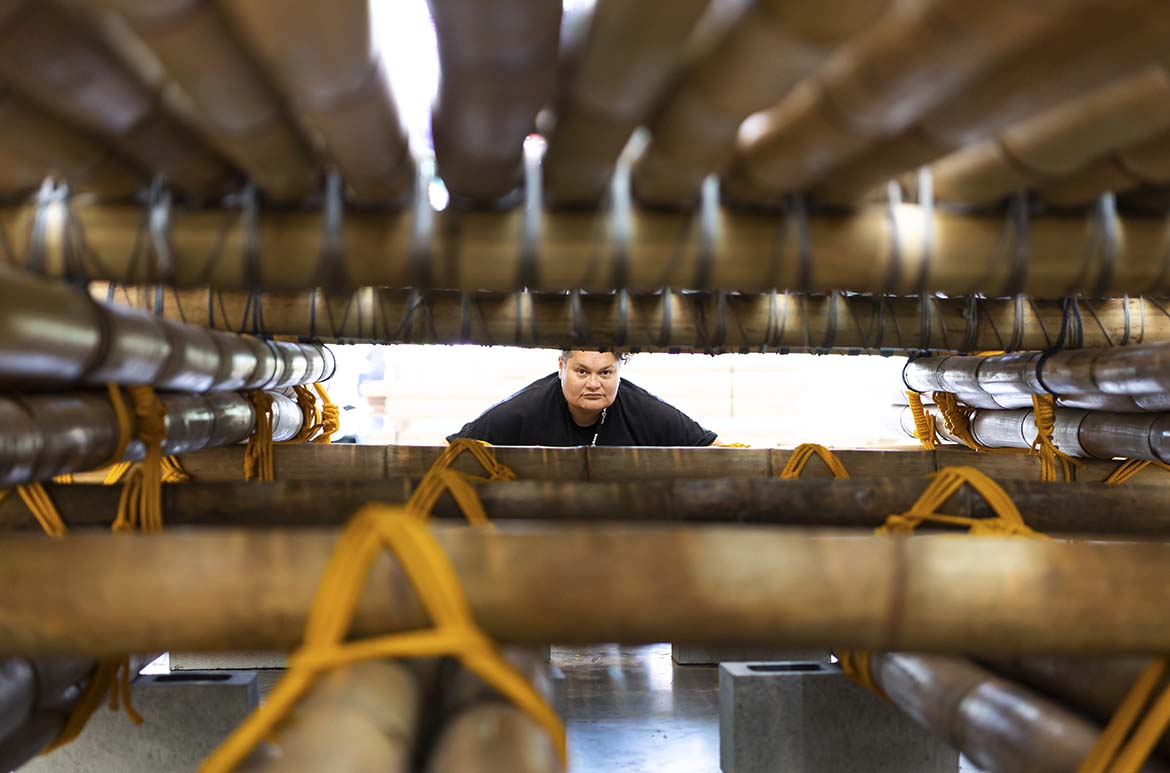

The knowledge of place and inherent sustainability embedded in the design and construction of these vessels impressed Tawale as a possible model for how she could also respond to, and survive, the precarious conditions that climate change and a global pandemic have wrought on our place and time. Constructed with the same attitude towards using readily available and recyclable materials, and yet uniquely adapted for Tawale herself, No Location 2021 features used tarps, bedsheets and rope alongside locally sourced bamboo. A range of objects necessary for ‘living’ are installed on the vessel, carefully selected and placed to evoke the presence and specificity of the artist’s body and personal history. These items include solar panels, clothing, an iPad (so Tawale can watch her favourite English crime shows) a barbeque and a deflated air mattress.
By embodying everyday contemporary materials, Tawale can create and shape new forms and interpretations that relate directly to her experience and identity; No Location’s DIY, makeshift, camping aesthetic speaks to the artist’s need to ‘shift and constantly reshape her cultural slippage’.2
Ruth McDougall is Curator, Pacific Art, QAGOMA
Endnotes
1 The HMS No Come Back is a bilibili in the collection of the Fiji Museum, Suva. See ‘The Making of the HMS No Come Back’,
The Fiji Museum – Virtual Museum, <http://virtual.fijimuseum.org.fj/template.php?id=DB04>, and ‘HMS No Come Back’, The Fiji Museum – Virtual Museum, <http://virtual.fijimuseum.org.fj/template.php?id=DHMS>, viewed 9 June 2021.
2 Salote Tawale, ‘Introduction’, Salote Tawale [artist book], Arts NSW, Sydney, 2017, p.2.
‘The 10th Asia Pacific Triennial of Contemporary Art’ (APT10) / Gallery of Modern Art (GOMA). APT10 was at the Queensland Art Gallery and Gallery of Modern Art (QAGOMA), Brisbane from 4 December 2021 to 25 April 2022.
#QAGOMA
